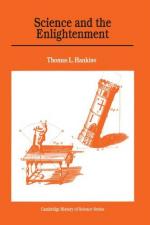
|
| Name: _________________________ | Period: ___________________ |
This test consists of 5 multiple choice questions, 5 short answer questions, and 10 short essay questions.
Multiple Choice Questions
1. What area of study in the Middle Ages had been the domain of those truths that could be found through the use of reason alone without the revelation of the Bible?
(a) Psychology.
(b) Physiology.
(c) Natural theology.
(d) Mied mathematics.
2. The concept of subtle fluids made its appearance around ________ when demonstration experiments in physics were rapidly gaining in popularity, according to the narrator in Chapter 3.
(a) 1800.
(b) 1770.
(c) 1740.
(d) 1853.
3. In Chapter 2, what was the name of the shape of a chain suspended between two fixed points?
(a) Catenary.
(b) Isoperimeters.
(c) Involute.
(d) Tractrix.
4. Who became the leading literary figure of the Enlightenment and in 1734 published "Philosophical Letters"?
(a) Newton.
(b) Chatelet.
(c) Voltaire.
(d) Breteuil.
5. Chapter 2 states that ________ had been created to deal with the problem of motion and that the new mathematical techniques discovered in the eighteenth century were all responses to the challenges of mechanics.
(a) Statistics.
(b) Calculus.
(c) Arithmetic.
(d) Geometry.
Short Answer Questions
1. Madame du Chatelet supported the Leibnizian theory of ________ because it gave a better account of free will.
2. Some of the "cabinet de physique" became very large, the most famous being the collection of the ________ in Haarlem.
3. What term did Toland invent for the belief that God and nature were one and the same, according to the narrator in Chapter 1?
4. In Chapter 3, ________ and ________ were both led to the problem of specific heat by the discovery that a great deal of heat was required to melt ice, even though its temperature remained at the melting point.
5. According to the narrator in Chapter 1, what was the key to a correct method whose model was mathematics?
Short Essay Questions
1. What prompted the versions of the mechanical philosophy in the seventeenth century? Give an example.
2. Discuss Charles Francois de Cisternai Dufay and his impact in electrical science.
3. Discuss Benjamin Franklin's single static electrical atmosphere.
4. Discuss Fontenelle's tie to science and literature as discussed in Chapter 1.
5. Discuss the product of the Philosophical Letters.
6. Who was William Herschel and what planet did he discover?
7. Discuss the ideology of the Enlightenment on natural philosophers. Who was France's main natural philosopher? Explain.
8. Discuss the origin of the study of electricity.
9. Discuss the electrical experiments of Benjamin Franklin, Stephen Gray and Abbe Jean Antoine Nollet.
10. Discuss how nature and reason tied into the Enlightenment.
|
This section contains 868 words (approx. 3 pages at 300 words per page) |

|




